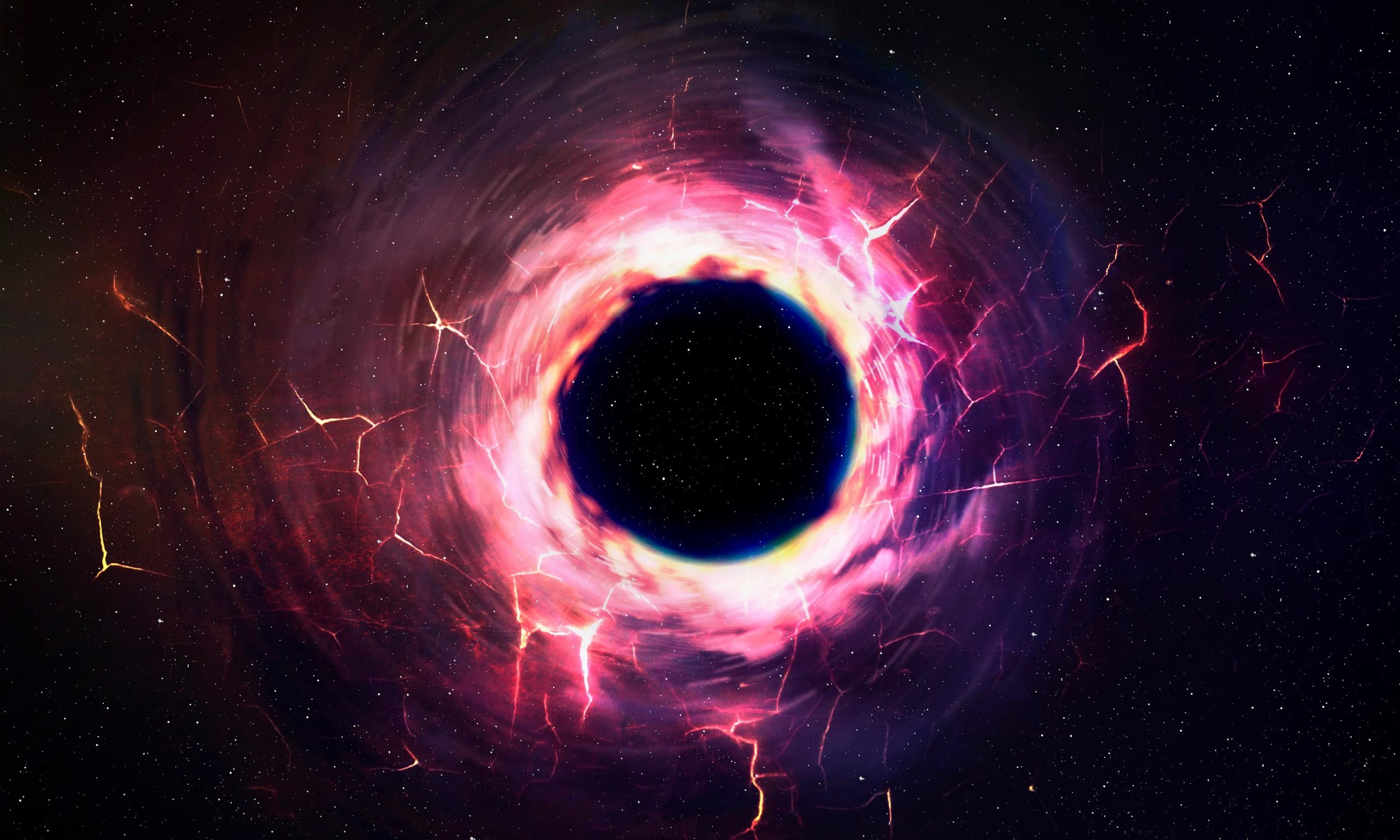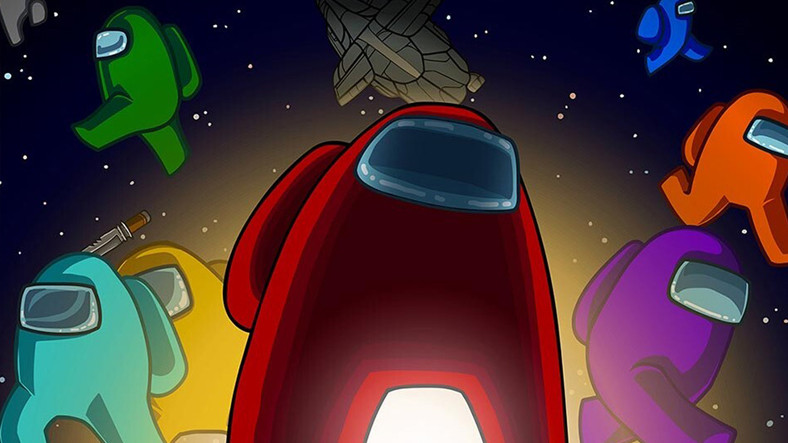Black holes are one of the most fascinating objects in the universe. On their surface, known as the “event horizon”, gravity is so strong that not even light can escape from them. Usually black holes are calm, silent beings that swallow anything that comes too close to them. However, when two black holes collide and merge, they create one of the most catastrophic events in the universe: a severely deformed one in a split second black hole is born and releases enormous amounts of energy when it settles into its final form. This phenomenon gives astronomers a unique opportunity to observe rapidly changing black holes and to study gravity in its most extreme form.
Although colliding black holes do not produce light, astronomers can observe what is detected Gravitational waves – waves in the fabric of space and time – that ricochet off them. Scientists speculate that after a collision, the behavior of the remaining black hole is key to understanding gravity and should be encoded in the gravitational waves emitted.
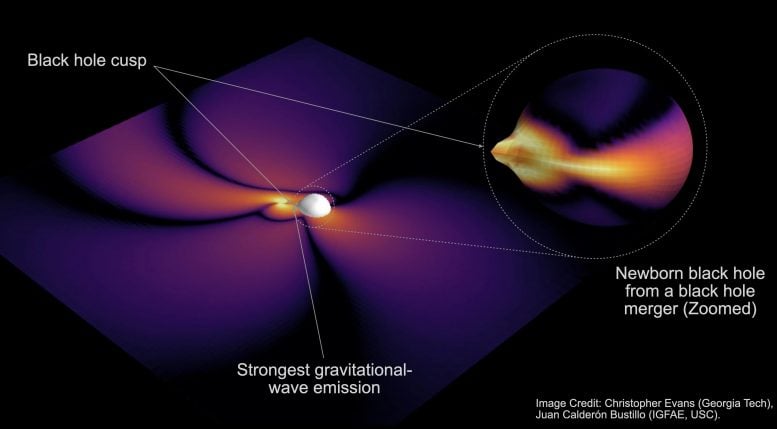
Artist illustration of a black hole tip. Photo credit: C. Evans; JC Bustillo
In the article published in Communication physics (Nature), a team of scientists led by OzGrav alumnus Prof. Juan Calderón Bustillo – now “La Caixa Junior Leader – Marie Curie Fellow” at the Galician Institute for High Energy Physics (Santiago de Compostela, Spain) – has shown how gravitational waves encode occur the shape of the amalgamation of black holes when they settle in their final shape.
Graduate student and co-author Christopher Evans of the Georgia Institute of Technology (USA) says: “We simulated black hole collisions with supercomputers and then compared the rapidly changing shape of the remaining black hole with the gravitational waves it emitted. We found that these signals are far richer and more complex than commonly thought, so we can learn more about the vastly changing shape of the final black hole. ”
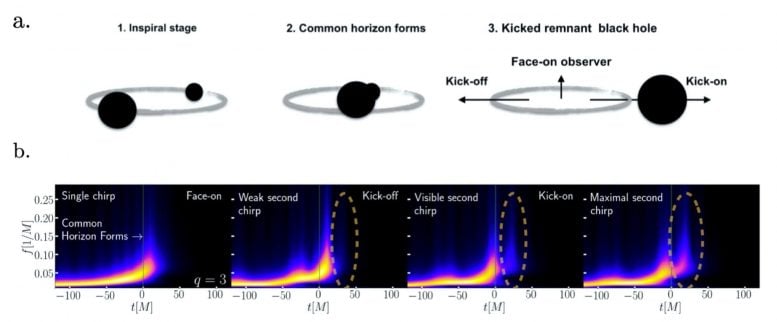
First, both black holes orbit and slowly approach each other during the inspiration phase. Second, the two black holes merge and form a distorted black hole. Eventually the black hole reaches its final shape. b: Frequency of the gravitational wave signals observed from the top of the collision (far left) and from various positions at its equator (rest) as a function of time. The first signal shows the typical “chirp” signal in which the frequency increases as a function of time. The other three show that after the collision (at t = 0) the frequency drops and rises again, which creates a second “chirp”. Photo credit: C. Evans, J. Calderón Bustillo
The gravitational waves from colliding black holes are very simple signals known as “chirps”. As the two black holes get closer, they send out a signal of increasing frequency and amplitude that indicates the speed and radius of the orbit. According to Prof. Calderón Bustillo, “the pitch and amplitude of the signal increases as the two black holes approach faster and faster. After the collision, the last remaining black hole sends out a signal with a constant pitch and decreasing amplitude – like the sound of a bell being struck. “This principle agrees with all previous gravitational wave observations when the collision is examined from above.
However, the study found that something completely different happens when the collision is observed from the “equator” of the last black hole. “When we observed black holes from their equator, we found that the last black hole emits a more complex signal, the pitch of which goes up and down a few times before it dies,” explains Prof. Calderón Bustillo. “In other words, the black hole actually chirps multiple times.”
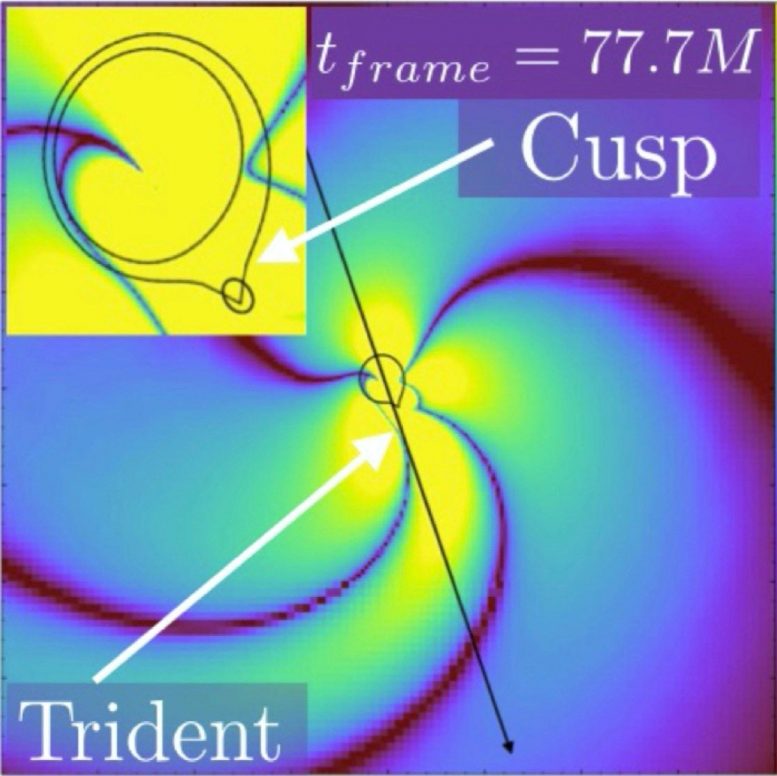
Detail of the shape of the remaining black hole after colliding with a black hole with a ‘chestnut shape’. Regions with strong gravitational wave emission (in yellow) gather near their tip. This black hole is spinning and the tip is pointing at all observers around it. Photo credit: C. Evans, J. Calderón Bustillo
The team found that this is related to the shape of the final black hole, which acts like a kind of gravitational wave lighthouse: “If the two original ‘parent’ black holes are different sizes, the final black hole will initially look like a chestnut with a point on one side and a wider, smoother back on the other, ”says Bustillo. “It turns out that the black hole sends out more intense gravitational waves through its most curved regions surrounding the tip. This is because the rest of the black hole is also rotating, its tip and back repeatedly pointing at all observers, resulting in multiple chirps. ”
Co-author Prof. Pablo Laguna, former chair of the School of Physics at Georgia Tech and now professor at the University of Texas at Austin, pointed out that “there has long been a relationship between gravitational waves and the behavior of the ultimate black hole our study provides the first explicit example of this type of relationship. ”
Reference: October 8, 2020, Communication physics.
DOI: 10.1038 / s42005-020-00446-7

